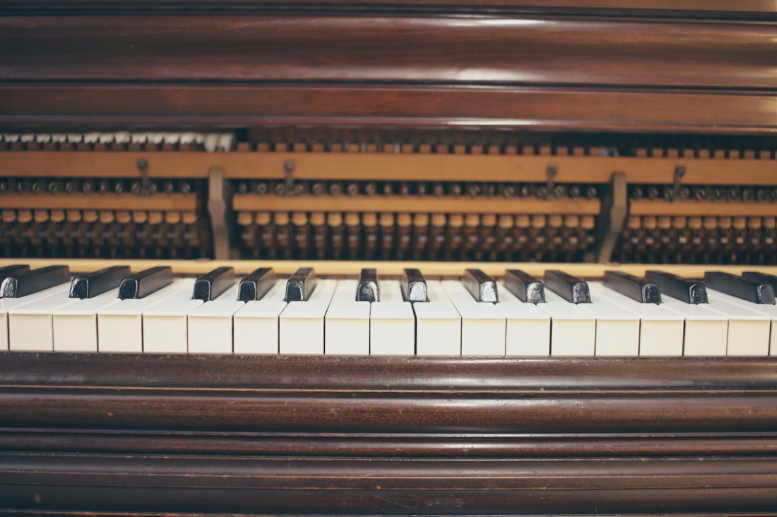
You’ve nailed that tricky left‑hand arpeggio at home, then a five‑day work trip lands on your calendar and—poof—momentum vanishes. Sound familiar? Learning how to practice piano while traveling means you keep hard‑won progress, strengthen muscle memory, and come home feeling confident instead of rusty. Two big mind‑shifts help:
If you want a rig that doubles as a learning coach, check out the Smart Keyboard. The main 29‑key unit weighs just 1.43 lbs, runs on battery, and clips magnetically to an expansion board when you need a fuller range—pretty neat for cramped hotel desks. LED‑lit keys walk you through songs, and MIDI over Bluetooth lets you record sketches straight into your phone.
Prefer a full 88‑key layout? The aptly named Carry‑on Folding Piano 88 collapses to just 33 cm and weighs about 1.6 kg. It lasts up to eight hours on a USB‑rechargeable battery and even includes built‑in speakers and MIDI over USB. Toss it in a backpack, breeze through airport security, unfold at the Airbnb—done.
|
Feature |
PopuPiano Smart Keyboard |
Carry‑on Folding Piano 88 |
|
Keys (base unit) |
29 (expandable) |
88 full‑size |
|
Packed size |
13.3 × 4.8 in |
13 in folded |
|
Weight |
1.43 lbs |
1.6 kg |
|
Battery life |
Several hours* |
≈ 8 hrs |
|
Learning lights |
Yes |
No |
|
MIDI |
Bluetooth & USB |
USB |
Flying day after day can blur schedules, so write a tiny daily plan before you depart. Here’s a sample 20‑minute routine that travels well:
And one quick safety note: most airlines cap lithium‑ion batteries at 100 Wh for carry‑ons. Both keyboards above fall well within that range, but double‑check specs before you board.
Even the best “piano on the go” can’t follow you everywhere—think beach hikes or conference halls. Here’s how to sneak practice into those key‑less moments:
|
Scenario |
Quick Fix |
|
Airport security |
Fold or detach your keyboard, place it flat in its own tray. Alert the officer it’s an electronic instrument—speeds things up. |
|
Tiny hotel desks |
Use a luggage rack as a makeshift stand; slip a towel underneath to stop slipping. |
|
Power woes |
Carry a universal USB‑C charger; both featured keyboards juice via USB, so no bulky adapters. |
|
Humidity changes |
Pack silica‑gel packets in the keyboard case to keep sensors happy. |
Travel is unpredictable. Flights delay, meetings overrun, relatives want to chat. Instead of a strict one‑hour daily target, set flexible micro‑goals:
Log one metronome‑filled run‑through of the piece’s trickiest passage.
Record a 30‑second improvisation every morning.
Meeting these mini targets breeds momentum and satisfaction—minus guilt.
|
Day |
Focus |
Tool |
|
Mon (Flight) |
Finger stretches + score marking |
Tablet + stylus |
|
Tue (Hotel) |
Slow section looping |
PopuPiano main 29 keys |
|
Wed (Client site) |
Mental playback during commute |
Earbuds only |
|
Thu (Airbnb) |
Full‑range repertoire run |
Carry‑on Folding Piano 88 |
|
Fri (Sightseeing) |
Rhythmic clapping drills |
Hands‑only |
|
Sat (Downtime) |
Record 4‑bar improvisation |
Smartphone DAW |
|
Sun (Return) |
Review progress & set new goals |
Notebook |
Travel no longer has to derail your musical journey. With a smart, piano-on-the-go setup—be it the modular PopuPiano or the sleek Carry‑on Folding Piano 88—plus bite‑sized, goal‑driven routines, you’ll land back home sharper, more creative, and ready for the next gig.
So pack those keys, book that flight, and keep the music rolling—wherever the road takes you.
Most airlines count it as a personal electronic the size of a small laptop once folded. Confirm dimensions (≈ 13 in × 5 in) against the carrier’s under‑seat policy.
Bluetooth doesn’t touch Wi‑Fi bandwidth. As long as your phone or tablet is within 10 meters, latency stays minimal.
Use mental cues: tap your heel silently on the floor at each pedal mark while you play staccato on a table surface. You’ll retain timing even without sustain.
They’re fun toys but lack velocity sensitivity and proper spacing. Go for a genuine practice piano keyboard—your fingers will thank you.
Leer más

How Does a Light‑Guided Keyboard Work? Learn to Play Step by Step
Light‑guided keyboards look like regular digital pianos—until the keys start glowing and practically beg you to press them. The concept feels almost magical, yet the tech behind those dancing LEDs ...

Why Are Different Instruments in Different Keys? A Music Theory Guide for Beginners
You’re jamming with friends, the guitarist calls out “Let’s play in C,” and the clarinetist calmly replies, “Sure, I’ll read that in D.” Wait—what? If you’ve ever scratched your head at conversatio...